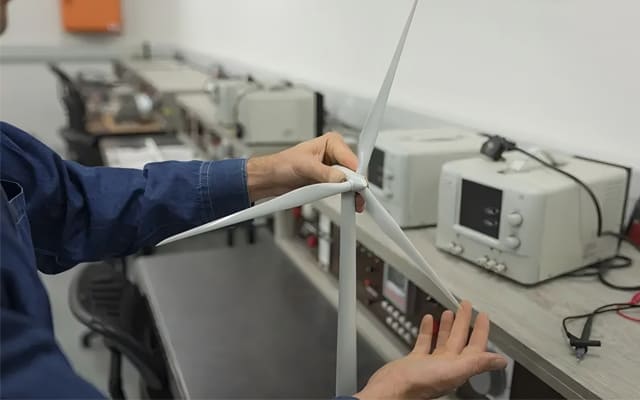What Is the “Real Voltage” of a Small Wind Turbine?
The real voltage refers to the stable output voltage of the wind turbine when it is operating under actual load conditions—not when it is spinning freely with no load. It represents the true power generation capability of the turbine under real-world wind conditions and electrical demand.
Why You Should Measure the Real Voltage
-
Assess System Health
A stable output voltage indicates that the turbine, rectifier, and controller are functioning properly. -
Match Wind Speed to Performance
Knowing how voltage corresponds to wind speed helps evaluate whether the selected turbine model suits your installation site. -
Ensure Compatibility with Batteries or Inverters
The voltage range determines whether the turbine can safely charge batteries or feed into hybrid systems without triggering overvoltage protection.
Preparation Before Testing
Before measuring voltage, be sure to prepare the following:
-
Digital multimeter or DC voltmeter (preferably with overvoltage protection and 0–600V range)
-
Proper electrical load, such as a battery bank, hybrid controller, or dump load (NEVER test open-circuit)
-
Wind speed recorder (optional but recommended)
-
Personal safety gear, including insulated gloves and tools
Step-by-Step: How to Test Small Wind Turbine Voltage Correctly
Step 1: Connect the Load
Always connect your small wind turbine to a proper DC load before testing. Open-circuit testing (no load connected) may result in dangerous voltage spikes that can damage your meter or controller.
Step 2: Identify the Testing Points
Locate the DC output terminals—usually after the rectifier or at the input of the controller. Connect the red probe to the positive terminal and the black probe to the negative.
Step 3: Set the Multimeter Correctly
Switch your multimeter to DC voltage mode and select a range higher than the turbine’s rated voltage (e.g., 200V if the turbine is 48V rated).
Step 4: Take Readings Under Stable Wind
Observe the voltage for at least 30 seconds while the wind is stable. Record the average, peak, and lowest voltage to evaluate performance.
Step 5: Compare Against Rated Voltage
Test at different wind speeds—4m/s, 5m/s, 6m/s—and check if your small wind turbine reaches or approaches its rated voltage under expected conditions.
Common Mistakes and How to Avoid Them
| Mistake | Consequence | Correct Method |
|---|---|---|
| Open-circuit testing | Voltage spike, risk of damage | Always test under load |
| Using AC mode on multimeter | Incorrect or zero reading | Use DC voltage mode |
| Testing before the rectifier | Useless reading or incorrect result | Test at DC output terminals |
| Ignoring wind speed | Misjudging performance | Record wind speed when testing |
Expert Tips for More Accurate Results
-
Test under various wind speeds to understand how the turbine performs across its operational range.
-
Use data logging if possible to track voltage fluctuations.
-
Avoid gusty conditions when testing, as wind instability leads to erratic readings.
Conclusion: Real Voltage Testing Matters for Small Wind Turbines
Small wind turbines are a reliable source of renewable power, especially when combined with solar in hybrid systems. But without accurate testing, it’s impossible to know whether your system is performing as expected—or falling short.
By following correct testing procedures with proper equipment and loads, users can avoid costly mistakes and ensure long-term success with their small wind turbine systems.
Need help selecting or testing your wind system? Contact ELEGE New Energy for expert support, professional-grade products, and tailored off-grid solutions built for real-world performance.

